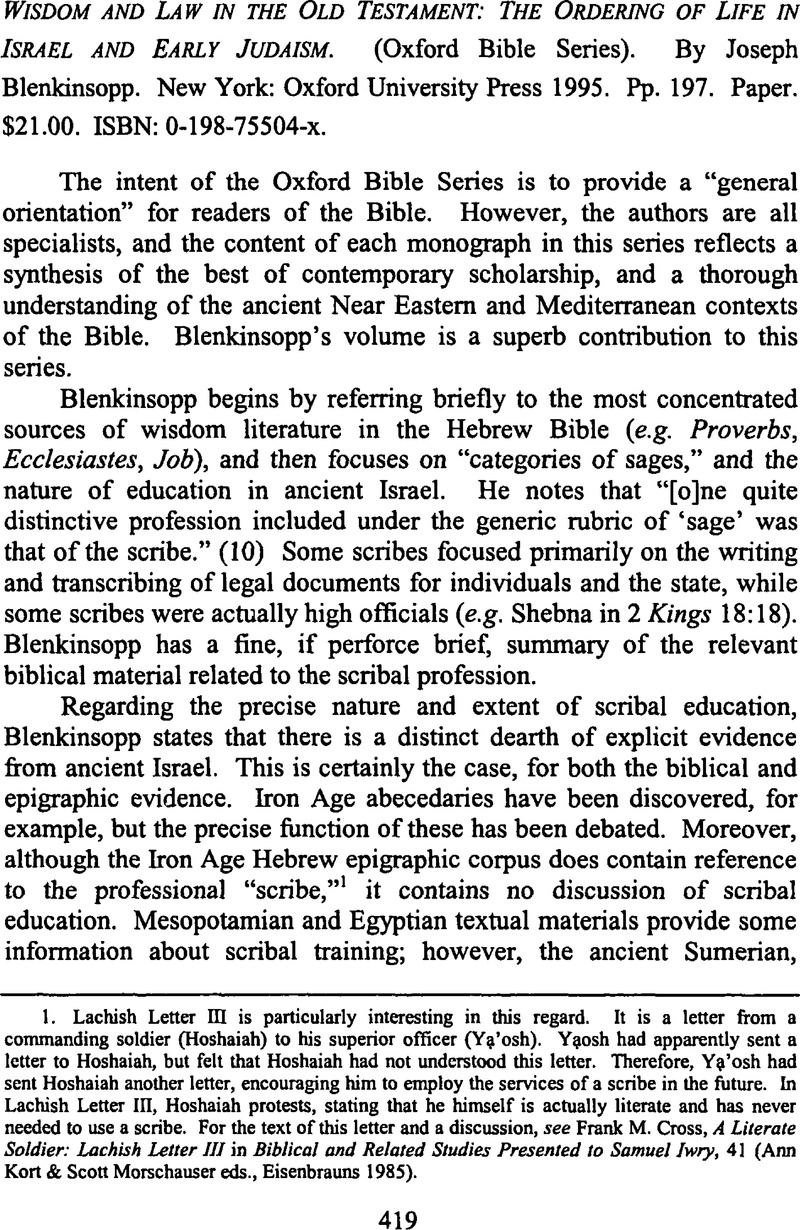No CrossRef data available.
Article contents
Wisdom and Law in the Old Testament: The Ordering of Life in Israel and Early Judaism. (Oxford Bible Series). By Joseph Blenkinsopp. New York: Oxford University Press1995. Pp. 197. Paper. $21.00. ISBN: 0-198-75504-x.
Published online by Cambridge University Press: 24 April 2015
Abstract

- Type
- Review Essays and Book Reviews
- Information
- Copyright
- Copyright © Center for the Study of Law and Religion at Emory University 2002
References
1. Lachish Letter III is particularly interesting in this regard. It is a letter from a commanding soldier (Hoshaiah) to his superior officer (Yạ'osh). Yạosh had apparently sent a letter to Hoshaiah, but felt that Hoshaiah had not understood this letter. Therefore, Yạ'osh had sent Hoshaiah another letter, encouraging him to employ the services of a scribe in the future. In Lachish Letter III, Hoshaiah protests, stating that he himself is actually literate and has never needed to use a scribe. For the text of this letter and a discussion, see Cross, Frank M., A Literate Soldier: Lachish Letter III in Biblical and Related Studies Presented to Samuel Iwry, 41 (Kort, Ann & Morschauser, Scott eds., Eisenbrauns 1985)Google Scholar.
2. Ugaritic is an alphabetic language; however, scribes at Ugarit were writing in several additional languages as well (e.g. Akkadian, Human). Therefore, comparisons of educational systems are problematic.
3. Claus Westermann's work on the Sitz im Leben of proverbs is especially important. See for example his Roots of Wisdom: The Oldest Proverbs of Israel and Other Peoples (Westminster/John Knox Press 1995)Google Scholar.




